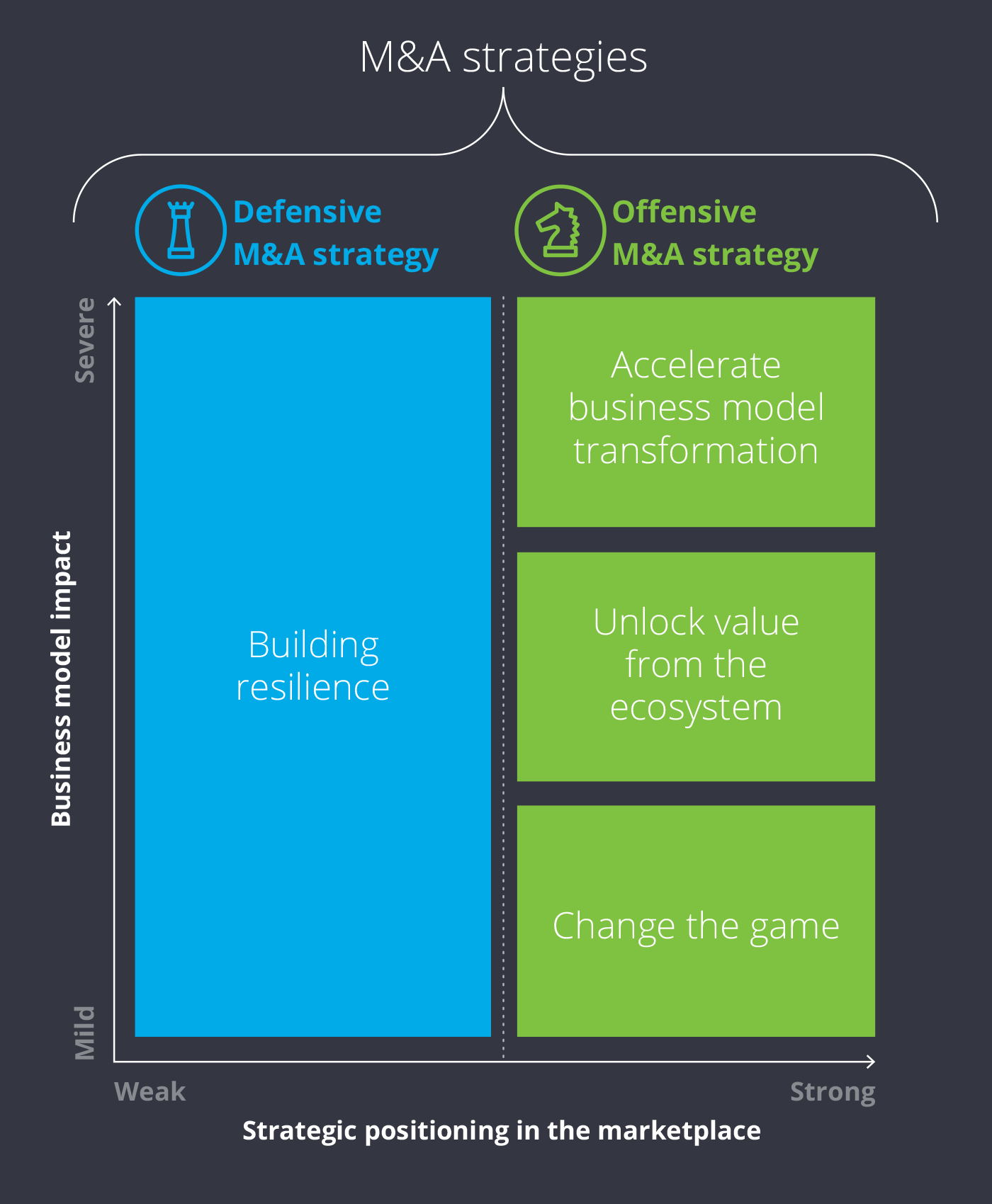The path to thrive: M&A strategies for a brave new world
Globally, companies have responded and recovered from the pandemic conditions by launching significant metamorphoses, and mergers and acquisitions (M&A) played an instrumental role in this journey. In 2021, companies spent an unprecedented $5 trillion on M&A, the highest activity ever recorded. Such unprecedented peaks meant 2022 had a hard act to follow and, despite the challenging market conditions, closed with $3.3 trillion worth of deals, on par with the decade-long average.

How M&A can shake up and stabilize businesses
The past few years have demonstrated M&A strategies are firmly cemented as a fundamental part of the corporate arsenal, both in defense to preserve value and in offense to drive growth. The M&A markets are also highly resilient. Our analysis of the nearly 40 years of historical M&A data shows adverse market conditions are a short term drag, and M&A volumes tend to recover rapidly once the uncertainty subsides.
The past and the present
Back in 2008, the great financial crisis resulted in a sharp decline in M&A, and the markets did not recover until 2014. One of the main attributes of this market contagion was that it affected each sector fairly uniformly and therefore recovery cycles evolved over time, given the symmetrical nature of the underlying causality. However, this time around, the pandemic caused an asymmetrical market contagion as each industry and sector was affected differently. The result? Varying recovery velocities of leading and lagging, depending on the degree of impact and organizations’ corresponding abilities to do something about it.
As a result, markets came roaring back, and in 2021–22, more than $8 trillion worth of deals were announced, as companies took advantage of their strong cash reserves and favorable debt markets to make M&A central to business recovery. Based on our research from the original Charting new horizons report, we evolved our M&A framework based on defensive and offensive deal archetypes that could build resilient business models and accelerate transformation.
The path to thrive will be defined by two distinct capabilities: resilience, in which a company needs to secure its foundations, rapidly adapt, and emerge stronger; and transformative growth, in which it needs to reinvent the business to succeed in the new realities.

Defense and offense
For example, supply chain issues have been a recurring challenge over the past couple of years. To address that, a company could consider an acquisition of a supplier. This happened recently in response to the global semiconductor chip shortage crisis. A major chipmaker acquired a specialist chip contract manufacturer to boost production capacity and secure its customer base.
Companies could also seize on opportunities through co-investment and partnerships, including with private equity firms. This kind of collaboration can facilitate transformation by pooling resources and expertise, which in turn helps to build resilience.
Similarly, offensive strategies are also a way to capitalize on opportunities. However, an offensive strategy is grounded in gaining momentum rather than building resilience. Corporations could do that by transforming business models, collaborating to stay competitive, and capitalizing on cross-sector convergence. Many opportunities nowadays need to be considered through the lens of whether to build, buy, or collaborate to achieve a goal. These dynamics have pushed the expansion of the scope of traditional M&A strategies to include collaborative structures, partnerships, and other configurations.
For instance, environmental, social, and governance (ESG) goals often can’t be achieved unilaterally and demand collaboration; it can take multiple collaborators to make an impact. A useful example of this is the decarbonization of the aviation industry. To tackle this goal, an aircraft manufacturer, industrial gas supplier, and airport operator formed an alliance to promote the use of hydrogen infrastructure. Although this isn’t necessarily an example of a traditional merger or acquisition, it captures the positive potential of this broadened vision of M&A.
